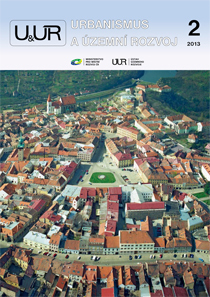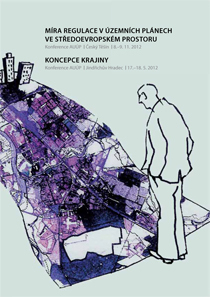

Practical experience of the processing of indicators of sustainable spatial development, by Veronika Šindlerová, Jakub Vorel, Daniel Franke
In several European countries a systematic monitoring of the state and development of territory by means of quantitative indicators is an indispensable part of the process of physical planning. The objective of Application of the Principles of Sustainable Development in Physical Planning, a research project carried out in 2005–2006, was to transfer the experience of the use of indicators and propose a methodology for their application under the conditions of the Czech Republic. A specific outcome of this project was a set of indicators of sustainable spatial development. The aim of this article is to summarize briefly and comprehensively the practical knowledge of the preparation of input data and the elaboration of output indicator values for sustainable spatial development. The primary purpose of the project was its implementation within the second full update of the analysis of sustainable development on the territory of the town of Most and its administrative area.
The influence of the quality of the base digital elevation model on the results of spatial conflict modelling, by Jana Svobodová & Jaroslav Burian
This article deals with the problems of modelling spatial conflicts in the functional use of territory as part of physical planning, using characteristics derived from the Earth’s surface. Specifically, the topic is conflict modelling of functional areas for housing, sports and recreation with the inclination of slopes and the degree of sunshine on slopes, which can be considered very important from the viewpoint of comfort and the quality of life of inhabitants. The main objective of this article is to assess the impact of the quality of the base digital elevation model (DEM) on the results of modelling. It is probable that poor DEM will result in poor outcome of the analyses. As input data for the creation of DEM, in particular the contour lines from the DMÚ 25 data model were used. The results of the analyses show that if excellent DEM is used, locations with critical values under observation can be identified unambiguously. In the case of low quality base DEM, the delimitation of the necessary measures and the planning of prospective development of settlements can become problematic.
Optimal degree of spatial regulation in the opinion of the Building Offices in the Region of Liberec, by Jindřich Felcman
Based on a questionnaire survey of the staffs of the Building Offices in the Region of Liberec, this article refers to spatial regulation in development plans and the search for the ideal level of its specification. The respondents commented on ways of spatial regulation they consider suitable. The results of the survey indicate that spatial regulation should concentrate on specific urban units. The optimal degree of specification of the regulation should be adjusted according to identified demands for the protection of these units.
The background of the housing construction in the First Republic, part III: Znojmo, by Dana Novotná
In two previous articles I described some general conditions of the origin of the governmental policy which supported private housing construction in the era of the First Republic of Czechoslovakia. In more detail I focused on the city of Brno, then developing rapidly. All the examples I gave represented a successful mastering of the economic and social situation of the time and many pointed out interesting instances of architecture and urban planning. In the last part I describe problems builders were confronted with in the town of Znojmo. Also, I present a few buildings which are undoubtedly interesting although not considered extremely valuable in terms of urban planning or architecture on a nation-wide scale.